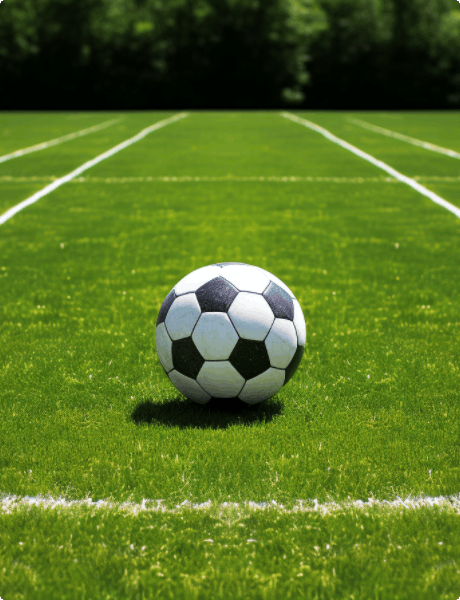
- Afrikaans
- Arabic
- Belarusian
- Bengali
- Czech
- Danish
- Dutch
- English
- Esperanto
- Estonian
- Finnish
- French
- German
- Greek
- Hindi
- Hungarian
- Icelandic
- Indonesian
- irish
- Italian
- Japanese
- kazakh
- Rwandese
- Korean
- Kyrgyz
- Lao
- Latin
- Latvian
- Malay
- Mongolian
- Myanmar
- Norwegian
- Persian
- Polish
- Portuguese
- Romanian
- Russian
- Serbian
- Spanish
- Swedish
- Tagalog
- Tajik
- Thai
- Turkish
- Turkmen
- Ukrainian
- Urdu
- Uighur
- Uzbek
- Vietnamese
Exploring the Benefits of 35mm Synthetic Turf for Various Applications
Dec . 04, 2024 07:28 Back to list
The Rise of 35mm Fake Grass A Sustainable Solution for Urban Landscaping
In an era where sustainability and ecological awareness have taken center stage, urban landscaping has undergone a significant transformation. One of the most innovative solutions that have gained popularity is the use of 35mm fake grass, also known as artificial turf or synthetic grass. This product not only offers aesthetic appeal but also solves various challenges often faced by urban planners and homeowners alike.
The Appeal of Artificial Grass
Artificial grass has come a long way since its inception in the 1960s. Initially used primarily in sports facilities, it has found a new home in residential gardens, parks, and commercial landscapes. One of the main attractions of 35mm fake grass is its realistic appearance. The blades are designed to mimic the texture and color of natural grass, making it an appealing alternative for those who desire a green space but lack the time or resources to maintain a traditional lawn.
Moreover, the 35mm height of the blades gives it a lush look while providing a soft feel underfoot. This height strikes an excellent balance, providing comfort while being durable enough to withstand heavy foot traffic. Children can play, pets can roam, and families can enjoy their outdoor spaces without worrying about the wear and tear typically associated with natural grass.
Environmental Benefits
The environmental impact of using 35mm fake grass extends beyond mere aesthetics
. Traditional lawns require extensive maintenance, including watering, mowing, fertilizing, and pest control. This routine demands significant water resources, which can exacerbate drought conditions in many areas. In contrast, artificial grass eliminates the need for irrigation, conserving valuable water resources.Furthermore, synthetic grass helps reduce the usage of harmful chemicals often employed in traditional lawn care. By opting for a chemical-free environment, homeowners contribute to a healthier ecosystem, minimizing pesticide runoff that can contaminate local water supplies.
Another environmental advantage is that many manufacturers of artificial turf now use recycled materials in their products. This shift towards sustainability helps reduce the overall carbon footprint associated with lawn maintenance while promoting a circular economy.
35mm fake grass

Economic Advantages
Investing in 35mm fake grass can also lead to substantial economic benefits. Although the initial installation cost may be higher than seeding a traditional lawn, the long-term savings can be significant. Homeowners no longer need to spend on irrigation systems, fertilizers, or ongoing lawn maintenance services. This not only reduces monthly expenses but also lowers the overall time commitment required for lawn care.
Commercially, businesses that maintain attractive outdoor spaces can draw in more customers, making the investment in synthetic grass worthwhile. Landscapers and municipalities are also beginning to embrace this technology due to its cost-effectiveness and low maintenance needs. Parks and recreational facilities can look pristine year-round without the burden of upkeep costs.
Challenges and Considerations
However, the adoption of 35mm fake grass is not without challenges and considerations. Some critics argue that synthetic grass can result in higher temperatures in surrounding areas, creating a “heat island” effect. This concern is particularly relevant in urban environments where concrete and asphalt already contribute to heat retention.
Another point of consideration is the end-of-life of artificial turf. While many products are designed for longevity, eventually, they will need to be replaced, which raises questions about waste management and recycling options. Fortunately, advancements in technology continue to emerge, with initiatives aimed at recycling old turf into new products, thus lessening the environmental impact.
Conclusion
The use of 35mm fake grass presents a compelling option for modern landscaping, particularly in urban settings. Its aesthetic appeal, coupled with environmental and economic benefits, makes it an attractive alternative to traditional lawns. As more people become aware of the advantages of artificial grass, it is likely that its popularity will continue to soar. Urban spaces can be transformed into green oases that promote sustainable living, bringing nature closer to the concrete landscapes of our cities. As we navigate the challenges of climate change and urbanization, 35mm fake grass may very well play a crucial role in crafting the future of outdoor spaces.
-
The Benefits of Artificial Turf for Indoors
NewsJul.15,2025
-
How Artificial Grass Suppliers Ensure Quality Products
NewsJul.15,2025
-
Artificial Grass and Pets: A Space for Relaxation
NewsJul.08,2025
-
Balcony & Outdoor Decoration with Artificial Grass
NewsJul.08,2025
-
Best Indoor Artificial Grass for Home
NewsJul.07,2025
-
Best Pet Turf for Dogs: Safe & Durable Artificial Grass Options
NewsJul.07,2025
Products categories









